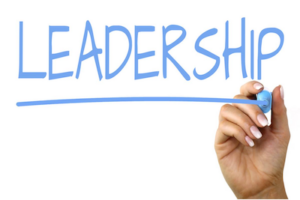Why Industry Leaders Value STEM Educators
A MiddleWeb Blog
Author and veteran classroom educator Anne Jolly is co-author of a new industry-designed, educator-developed STEM curriculum that prepares elementary and middle school students for a 21st century workforce. Used across the U.S. and the U.K., the curriculum is funded by Airbus, Amazon, Snap-on Tools, Thompson Engineering, and other industry leaders.
The Thankfulness Switch
What a great time of the year! For the next month I’ll be consciously switching into “Things I’m Thankful For” mode when I start feeling blah. But when it comes to STEM, my “Thankful” switch flips on automatically.
That’s because I’m especially thankful for all the remarkable STEM educators out there – willing to step out and try new cutting-edge ideas and practices, take risks, and educate kids in ways you know they learn and thrive best.
In case you need an additional “thank you!” boost, I have good news! Business and industry leaders are also thankful for you, and for the students you’re turning out through your STEM programs.
You may find that surprising. For some time now, you’ve heard businesses lament that they need graduates with more than academic competence. Businesses need workers who are collaborative team players, effective communicators, and innovators; and who have the cultural, social, and ethical knowledge needed for making decisions and building relationships. It’s all true, but…
The STEM turnaround
Now your STEM students are making inroads into that need! Current research findings plus anecdotal evidence show that students involved in successful STEM programs are displaying many of these skills. That’s a big thanks to you and your purposeful guidance.

Many major corporations and businesses (Amazon, Google, Airbus, Snap-On, and others) clearly define a set of leadership principles they look for in their workforce. When you examine those principles, you’ll realize that STEM teachers (that’s you) are routinely building those skills in STEM students as you lead them in solving STEM challenges.
For years you’ve heard STEM touted as the way to build 21st century competencies in students. Try wrapping your head around this idea:
In teaching STEM you are doing more than preparing your students for a 21st century society. You are preparing them to be leaders in that society! And you’re equipping ALL of your students – not just a few – for leadership roles.
A caption for your STEM classes could be Leadership Prep.
Leadership competencies you build and shape
To illustrate your role in building leadership skills in your STEM students, take a look at 11 top leadership principles that businesses and industry are looking for. Spoiler alert: They’ll look familiar!
Employers are looking for leaders who can do these things:
►Solve problems effectively. This trait was near the top of everyone’s list. Businesses need leaders who can anticipate problems before they happen, recognize problems when they occur, and find solutions for existing challenges. As a STEM teacher, you’re already on top of this! This skill is at the heart of every STEM lesson. In your classes kids routinely identify problems (challenges) and work on finding solutions.
►Promote collaboration and teamwork. The workforce needs leaders who can create an environment where ideas are shared freely – the kind of diverse culture that leads to innovation, new solutions, and productivity. As you lead STEM challenges, you are helping students develop knowledge, behaviors, and skills that fuel successful teaming and collaborating.
►Build strong relationships. As you involve kids in working together, they practice important skills such as empathy, being respectful, supporting one another, and earning trust. Successful leaders exhibit those skills. They value people they work with and care about their employees’ personal well-being and accomplishment.
►Possess a clear vision and focus on results. Leaders have a vision and purpose for their work. They know where they’re going and what they need to achieve. Your STEM kids routinely focus on a real need or purpose and know what they should accomplish. Like business leaders, they have a clear understanding of what they need to do to deliver a successful product or solution.
►Make good decisions. Leaders develop good instincts by listening to others, asking questions, understanding the facts, and considering multiple ideas and solutions before making decisions. As your STEM students work collaboratively to solve challenges, they build these same decision-making skills.
►Persevere when they don’t succeed: Leaders often face setbacks and challenges, but they know that persistence – sticking with it through tough times – is crucial for success. Likewise, your STEM kids are not stymied If they don’t succeed at first – in fact, in real life engineers actually expect this outcome as part of finding solutions. Rather than regarding lack of initial success as “failure,” STEM kids understand that this is a normal, useful part of solving problems. Like leaders, STEM kids use lack of success to learn and redirect their efforts.
►Deliver Results. Leaders set the bar high and make sure they deliver quality results. Likewise, STEM kids consistently practice the principle Do your job and do it well. They practice being active and responsible participants, paying attention to detail and delivering solutions that work.
►Are dependable and accountable. Leaders take responsibility for their actions. They are open and honest. Their employees can depend on them to do what they say they will do. Those behaviors are essential in STEM projects, where students must depend on one another to develop successful solutions.
►Are effective communicators. Communication – clearly exchanging information, ideas, and feelings – is a biggie! Leaders must communicate regularly and consistently; they must listen carefully to feedback and understand other’s perspectives. In STEM projects kids frequently practice exchanging ideas and information clearly and in ways that others can understand. They do this as they work together in teams and as they present their results to a wider audience.
►Learn continually and grow. Leaders are never done learning and always try to improve. They are curious and constantly look for new knowledge, skills, and experiences to stay relevant. What good opportunities you have as a STEM teacher to instill this way of thinking in your students! They must develop healthy curiosity and investigate new concepts and technologies, among other things.
►Act as good stewards of resources and the Earth. Effective leaders in business and industry focus on sustainability, managing industry resources, and protecting the earth’s resources. A critical shortage of resources – water, food, medical care and energy, to mention a few – forms the basis for many STEM challenges in the classroom and the real world. Solving these problems and protecting the planet’s environment is a vital part of STEM efforts. Your STEM kids can become superheroes for Earth!
Leadership prep in STEM class
Your STEM teaching mirrors these real-world expectations for leaders in business and industry. As you consider those business leadership principles, think about specific ways your STEM projects routinely address many of them.
Kids focus generally on one or more of these skills in each challenge. Over time students gain awareness of their importance, increase the time they spend practicing them, and gradually integrate them into their behaviors. This takes intentional planning and guidance on your part, but what a valuable mission!
Do you notice your efforts to build these behaviors in your students paying off? Sometimes while teaching I’d wonder, Am I making any difference? When that happens to you occasionally, rest assured: as a STEM teacher you are making a difference whether you see immediate results or not.
One lesson at a time, you’re involving kids in practicing being effective citizens, workers, and leaders. And you’re involving them all – every one – in becoming the kinds of thinkers and doers who make a difference in the world.
Learning doesn’t get better than that!
So flip your Thankfulness Switch
STEM teachers matter! You are helping your students learn and grow in all directions at once – academically, professionally, and personally. What you’re doing as you lead STEM projects has direct, practical value for your students and society.
Use that knowledge to power up your energy level and continue to move forward. Teachers seldom see the immediate results we’d like, but that comes with the teacher territory. I’m thankful for all of you and for your vocations. You are the facilitators, enablers, and coaches your students need. This journey is worth your effort.
Leadership image by Nick Youngson CC BY-SA 3.0 Alpha Stock Images
Feature image by 👀 Mabel Amber, who will one day from Pixabay






































Anne,
Thank you so much for the blogs that are always so inspiring and informative! I am an EdD candidate and focus on trauma informed STEM education pre/post pandemic. I use a lot of your publications in my citations. Thank you for providing such valuable insights!
Did I really neglect to thank you for this comment, Cody? I certainly appreciate your thoughtfulness in posting it, and hope that you can continue to find information in my publications that you can use.